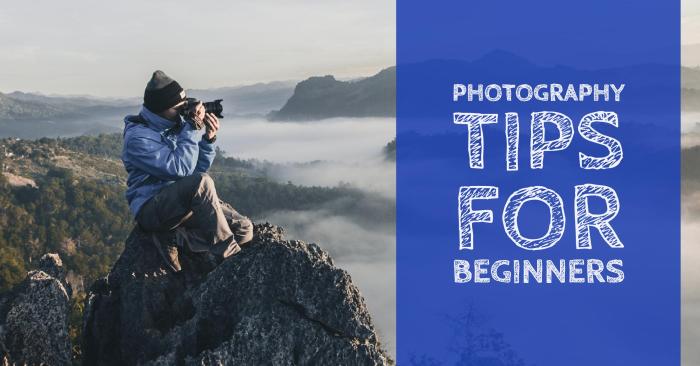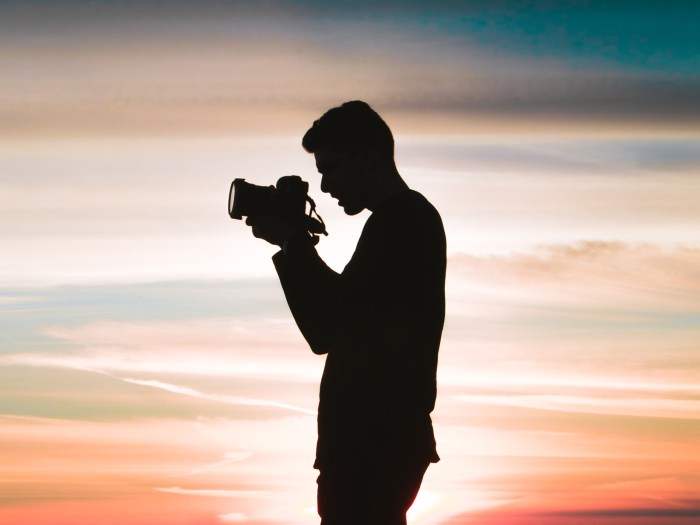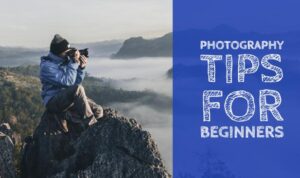Photography Tips for Beginners: Mastering the Basics for Creative Shots opens the door to a world of visual storytelling and creativity. Get ready to dive into the essentials of photography with this guide tailored for newbies in the art of capturing moments.
Introduction to Photography for Beginners
Photography is an exciting hobby that allows individuals to capture moments, express creativity, and tell stories through images. Understanding the basics of photography is crucial for beginners to build a solid foundation and improve their skills. Learning photography not only enhances creativity but also helps in developing visual storytelling abilities.
The Basics of Photography
- Understanding camera settings such as aperture, shutter speed, and ISO.
- Learning composition techniques like rule of thirds, leading lines, and framing.
- Exploring different lighting conditions and how they impact a photograph.
Essential Gear for Beginner Photographers
Starting out in photography requires the right gear to capture stunning images. Here are some essential items every beginner photographer should consider investing in:
Cameras
When it comes to cameras, beginners typically have three main options: DSLR, mirrorless, and point-and-shoot.
– DSLR cameras: Known for their versatility and excellent image quality, DSLRs are a popular choice among photographers. They allow for interchangeable lenses and manual controls, making them great for learning the basics of photography.
– Mirrorless cameras: These cameras are lightweight, compact, and offer high-quality images. They are a good option for beginners looking for a more portable alternative to DSLRs.
– Point-and-shoot cameras: Perfect for casual photographers, point-and-shoot cameras are easy to use and budget-friendly. While they may not offer as much control as DSLRs or mirrorless cameras, they are a great starting point for beginners.
Lenses
Investing in a good lens is essential for capturing sharp and detailed photos. Consider starting with a versatile zoom lens that covers a wide range of focal lengths. Prime lenses are also a great option for beginners looking to experiment with different apertures and achieve a shallow depth of field.
Tripods
A sturdy tripod is crucial for achieving sharp images, especially in low light conditions or when using slow shutter speeds. Look for a lightweight tripod that is easy to carry around and sturdy enough to support your camera and lens.
Memory Cards
Having extra memory cards on hand is essential for storing all your photos. Opt for high-capacity, high-speed memory cards to ensure quick write speeds and ample storage space for your images.
Recommendations for Budget-Friendly Gear
– Consider purchasing a beginner-friendly DSLR or mirrorless camera bundle that includes a standard zoom lens.
– Look for refurbished or gently used camera gear to save money without compromising on quality.
– Invest in a basic tripod that meets your needs without breaking the bank.
– Opt for mid-range memory cards from reputable brands to ensure reliable performance without overspending.
Understanding Camera Settings
Understanding camera settings is crucial for capturing the perfect shot. Let’s delve into the exposure triangle, white balance, and manual mode to enhance your photography skills.
Exposure Triangle:
The exposure triangle consists of three main elements – aperture, shutter speed, and ISO. These settings work together to control the amount of light that enters the camera and ultimately affect the brightness and sharpness of your photos.
Aperture: Controls the size of the opening in the lens, affecting depth of field.
Shutter Speed: Determines how long the shutter remains open, impacting motion blur.
ISO: Adjusts the sensitivity of the camera sensor to light, influencing image noise.
White Balance:
White balance is essential for achieving accurate colors in different lighting conditions. By adjusting the white balance settings on your camera, you can ensure that whites appear white and colors are true to life. Experiment with different white balance presets or set a custom white balance to match the lighting environment.
Manual Mode:
Using manual mode gives you full control over your camera settings, allowing you to adjust the exposure triangle and white balance according to your creative vision. While it may take some practice to master manual mode, the results are often worth the effort. Take the time to experiment with different settings and see how they impact your photos.
Composition Techniques for Better Photos

In photography, composition plays a crucial role in creating visually appealing and impactful images. By utilizing various techniques, photographers can enhance the overall look and feel of their photos. Let’s explore some key composition techniques that can help you elevate your photography game.
Rule of Thirds
The rule of thirds is a fundamental principle in photography that involves dividing your frame into a 3×3 grid. By placing key elements along the gridlines or at the intersections, you can create a well-balanced composition that draws the viewer’s eye to the focal point. This technique adds visual interest and can make your photos more dynamic.
Leading Lines
Leading lines are elements within a photo that guide the viewer’s gaze towards the main subject. These lines can be actual lines in the scene or implied lines created by patterns, shapes, or textures. By incorporating leading lines into your composition, you can create a sense of depth and movement, leading the viewer through the image.
Framing
Framing involves using elements in the foreground to frame the main subject of your photo. This technique adds depth and context to your composition, drawing attention to the subject while also providing a sense of scale. By framing your subject, you can create a more immersive and engaging image.
Symmetry
Symmetry is a powerful compositional tool that can create a sense of balance and harmony in your photos. By capturing symmetrical patterns or reflections, you can create visually striking images that are pleasing to the eye. Symmetry can help simplify a composition and highlight the beauty of repetitive shapes or forms.
Examples of Composition Techniques
– In a landscape photo, you can use the rule of thirds to place the horizon line along the lower third of the frame, emphasizing the sky or foreground.
– When photographing architecture, look for leading lines such as roads, pathways, or building edges to guide the viewer’s eye towards the main building.
– In portrait photography, use framing elements like doorways, windows, or foliage to frame your subject and draw attention to their features.
– Capture the symmetry of a reflection in a body of water to create a visually striking and balanced composition.
Experimenting with these composition techniques and incorporating them into your photography can help you create more compelling and visually appealing images. Remember to practice and explore different approaches to find what works best for your unique style and subjects.
Lighting Tips for Beginner Photographers
When it comes to photography, lighting plays a crucial role in capturing stunning photos. Understanding how to work with different lighting conditions can greatly improve the quality of your images.
Explain the significance of natural light versus artificial light in photography:
Natural light, such as sunlight, provides a soft and flattering illumination that can enhance the colors and details in your photos. On the other hand, artificial light sources like lamps or flashes can be used to create specific moods or effects in your images.
Techniques for Capturing Photos in Different Lighting Situations
- Golden Hour: Shoot during the golden hour (early morning or late afternoon) for warm, soft lighting that adds a magical touch to your photos.
- Overcast Days: Embrace cloudy days for evenly diffused light that minimizes harsh shadows and creates a soft, flattering look.
- Backlighting: Experiment with backlighting by positioning your subject in front of a light source for a dramatic silhouette effect.
Tips on Using Reflectors and Diffusers to Enhance Lighting Conditions
- Reflectors: Use reflectors to bounce light back onto your subject, filling in shadows and creating a more balanced exposure.
- Diffusers: Place diffusers between your subject and harsh light sources to soften the light and reduce harsh shadows for a more natural look.
Tips for Editing Photos: Photography Tips For Beginners

Photo editing is a crucial step in the photography process that can take your images to the next level. Understanding how to use editing software effectively can greatly enhance the quality of your photos. Here are some tips to help you get started:
Basics of Photo Editing Software, Photography Tips for Beginners
- Adobe Lightroom and Photoshop are popular choices for editing photos.
- Lightroom is great for overall photo enhancement and organization, while Photoshop offers more advanced editing capabilities.
- Both programs allow you to adjust exposure, contrast, color balance, and other aspects of your images.
Adjusting Exposure, Contrast, and Color Balance
- Use the exposure slider to control the brightness of your image.
- Adjusting contrast can make your photos more dynamic by enhancing the difference between light and dark areas.
- Color balance helps ensure that the colors in your photos look natural and accurate.
Other Editing Techniques
- Experiment with cropping to improve composition and remove distracting elements.
- Sharpening can enhance details in your photos, but be careful not to overdo it.
- Using presets can speed up your editing workflow and give your photos a consistent look.
Before-and-After Editing Examples
Editing can completely transform a photo, turning a dull image into a stunning masterpiece. By comparing the before-and-after versions, you can see the impact that editing can have on your photos.








